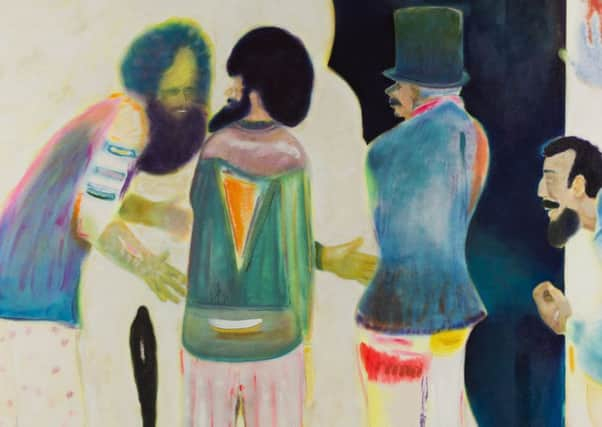Ebb and flow


Movement, mutation and motion are the linking themes of a new exhibition currently running at the Millennium Gallery in Sheffield. Everything Flows is part of a larger three-year project, Making Waves, which aims to showcase, nurture and celebrate the range and depth of visual arts talents in the city.
And there is much to celebrate judging by the quality and range of the work featured. Curator Jeanine Griffin has selected contributions from established and emerging Sheffield-based artists, whose pieces are all united, in different ways, by a sense of ‘flow’. This is manifested in a various ways, from choreographed motion to shifting narrative or the movement of international finance and migration. “I was invited back in November to curate the show and so I set about doing lots of research, talking to interesting artists in the city,” says Griffin. “I visited studios and went to a lot of shows. I was drawing together a body of work that included sculpture, painting, video, photography and sound installations that had some kind of relationship to each other.” She did not set out to find work with a particular theme she says, but gradually one became apparent.
Advertisement
Hide AdAdvertisement
Hide AdEarly on in her research Griffin came across the video works of Joseph Cutts. The looped installation Trigger Happy Discipline (2015) focuses on the slow, methodical revolving movement of a range of drill bits. “It is quite hypnotic,” she says. “It is really about machinery taking on an aesthetic role. It almost has a choreographed feel to it and that seemed to connect nicely with Rose Butler’s work.”
Butler’s short film Come and Go (2016) is a dual screen installation created in collaboration with a choreographer and shows slow motion footage of a woman dancing with a large piece of silky fabric. Referencing one of the earliest moving pictures, Butler has reimagined if for the modern age. “Her work deals with issues around surveillance and drone technology,” says Griffin. “If you move into the space near the film you can speed it up or slow it down, so as a viewer you become aware that you are being watched.”
Natalie Finnimore’s work blurs the boundary between sculpture and functional objects and playfully orchestrates the viewer’s movement around them. Painter Ryan Mosely plays around with the idea of narrative in his large-scale composite portraits which are not of real-life people but of a whole cast of characters he has created himself. “They look as though they are part of a larger narrative,” says Griffin. “So there is an uncertainty about the story.” This sense of mutability means that viewers have to fill in the gaps for themselves. Very much fact-based is photographer Victoria Lucas’ series Remedy (2012), shots of empty billboard hoardings in Greece at the height of the economic crisis. They present a powerful picture of what happens when a flow – in this case of international capital – is cut off. Ian Nesbitt’s work also has a global theme, exploring the flow of migration in a moving image showreel; Ruth Levene’s interpretation looks at Yorkshire watercourses in the form of digital drawings while painter Paul Barlow allows pigment to seep through his canvases and Peter Martin’s new sound work seeks to affect the movement of people passing through the gallery with quirky, tongue-in-cheek public address announcements.
To September 3.